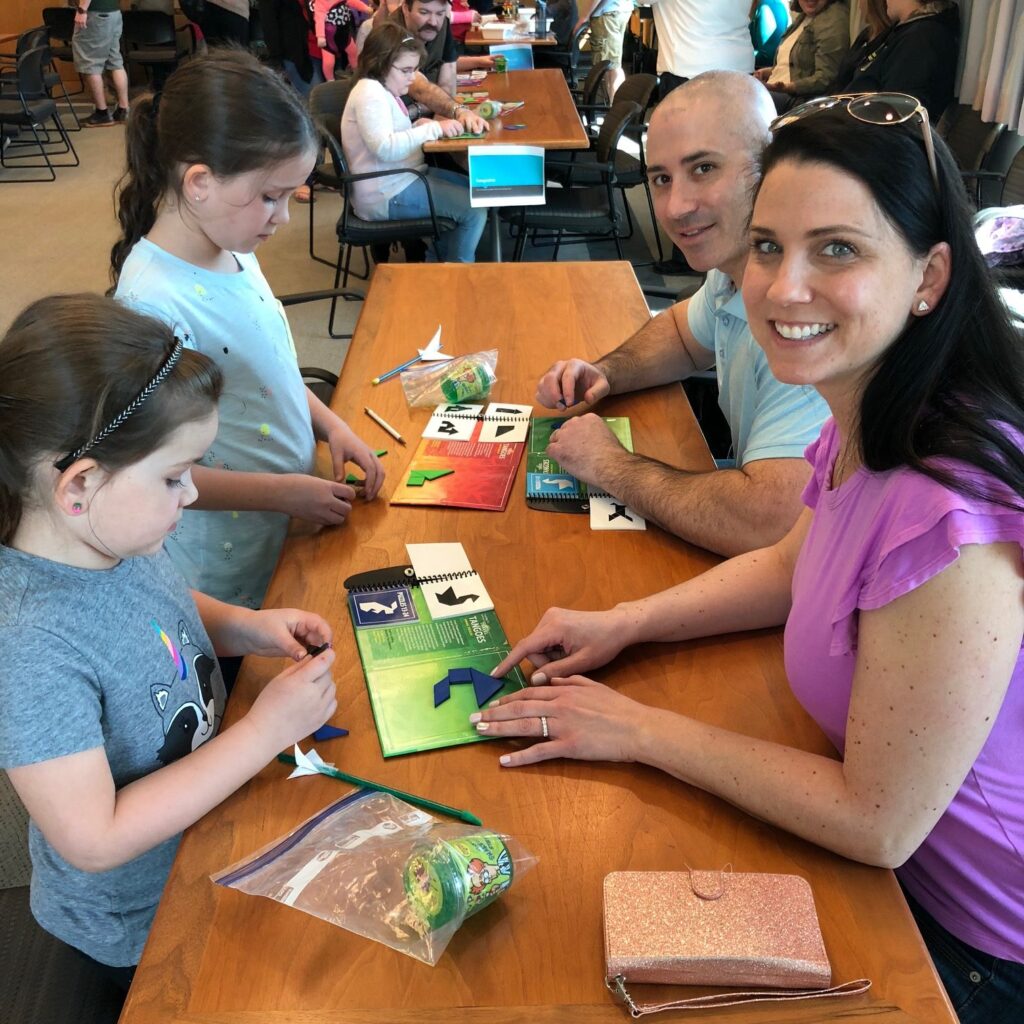It could be pizza, cheese and crackers or even cookies. A STEM Learning Ecosystem leader from rural New York shares that it doesn’t matter what’s on the menu, just as long as you offer families food during STEM-related events.

“It’s important to offer families something to eat if you want them to show up and be engaged,” said Lisa Blank, director of STEM programs for Watertown City School District and coordinator for the western region of the North Country STEM Ecosystem.
“Food really helps set the tone of an event. It invites families to stay and hang out. Food makes the whole event pleasant and more welcoming,” Blank said.
Serving food is one of many lessons Blank and Mary Margaret Small, director of the North Country STEM Ecosystem, have learned during their years of operating initiatives that engage families in school and community STEM-related events.
Include the whole family and consider event location
Small said being sure to include the entire family – siblings, grandparents and others – ranks high in importance as well.
And then there are lessons about where meetings and events are held. Blank and Small said libraries are often a better choice for host sites instead of schools. In rural communities the library tends to be a more central, easy to reach location. Comfort for families also plays a role.
In addition to considering the bias that families might have with schools, another critical factor in choosing libraries is the consideration of travel. Small mentioned that in a rural community the distance to travel for events can take hours depending on the location.
“We need to bring the STEM events to a location that is convenient. For us, we have a 4-hour drive from one end of our ecosystem to the other. So doing regional events, like those held in libraries, takes distance out of the equation and allows more families to participate,” said Small. “Time is precious for families and shortening the travel or transit time often makes the difference of whether a family can attend or not.”
“We also started to use public libraries because most communities have a public library and parents are more comfortable there. Libraries offer a space that is much less threatening for families,” Small said.
Small said some parents don’t have the best relationship with schools and aren’t always comfortable on a college campus. “They may not have done well in school and their negative feelings can resurface in those spaces, which can transfer to their children,” she said. “So it makes sense to host events that hope to attract families in a different location.”
Offering value when attendance isn’t possible
And when families can’t or don’t show up, Small said it’s critical to offer a way for them to gain value from the event, without actually attending in-person.
Small said they often livestream events on a YouTube Channel. “It’s a good idea to use technology to connect with families. Even when people are not physically present with us, they have opportunities to engage and we’ve gotten good feedback on that,” Small said.
Finding the fun in everything you do
The tools that Small and Blank use for boosting family engagement support their overall philosophy about family engagement serving as the lynchpin for student success in STEM.
From family STEM events to science fairs to a myriad of hands-on learning initiatives, Blank said that all have a role for families.
At the end of summer camps they operate, Blank said families are invited to a STEM carnival. The carnival includes a variety of school and community organizations, the local instrument lending library, and local farmers to help students make connections to other opportunities in the community.
“Agriculture is a significant sector of our local communities, so it is important to include it in our carnival programming alongside robots, coding, environmental activities, and games,” said Blank. “A highlight of our carnival is a friendly locally sourced food preparation competition supported by local farmers. The event culminates with a locally sourced Farm to School lunch.”
In addition to showcasing local community assets, Blank said integrating fun into family-related STEM events is critically important. “I think when people see the joy on kids’ faces it makes them want to be there. It makes families want the same experiences for their kids and to be a part of it,” she said.
KEY TAKEAWAYS:
- Serve food at events where you want families to be engaged.
- Invite extended families to attend.
- Consider the family’s commute time and comfort level when selecting a location for STEM events.
- Make use of technology so that those who can’t attend in-person can still benefit from the experience.
- Create opportunities to connect the whole community – assets, resources, talents – this responsibility is that of the ecosystem and is a burden that should not be placed on families.

